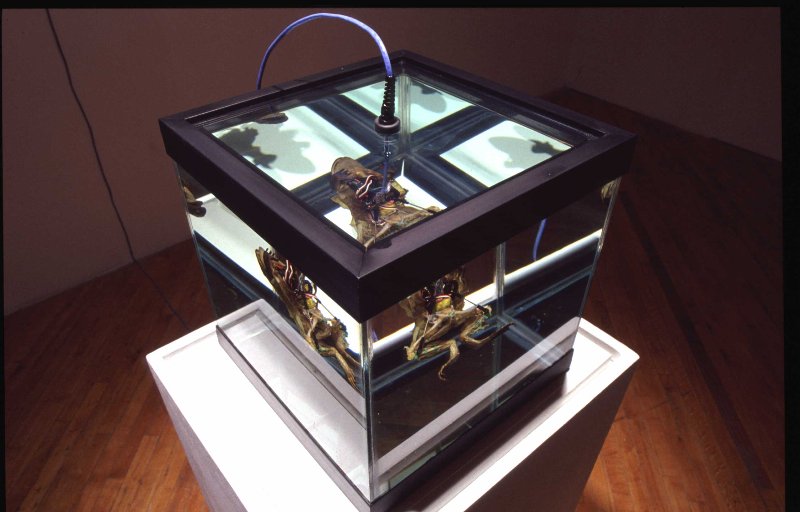In the last issue of Metropolis, there is an interesting article by Bruce Sterling about his 2005 experience as a 'visionary in residence' (at the Art Center College of Design, in Pasadena, California). Some excerpts:
Let me tell you what I learned as a visionary in art school. First: if people call you a visionary, you become one immediately. It's like becoming a pope. (...) My duties were light: they consisted mostly of high-velocity preaching (...) I had the run of the place, and a hell of a lot goes on there: it's like watching oatmeal boil. I now know what computer fabricators do. I can build mobiles out of wire. I can draw, or at least I know how it's done.
(...)
Before joining Art Center I had no idea how normal people got transformed into designers (...) Demo or die. Practice is the crucial difference between people who can talk (like myself) and people who can design (like my best students).
(...)
At design school I escaped a mental box. In my earlier self-definition I was a writer with speculative tendencies; I never created big goofy art installations. It turns out I can do that. It's possible. I just never knuckled down and tried it.
And what's interesting is the balance between "vision" and "action":
Design, as Charles Eames said, is a method of action. It's not a method of "vision." (...) When I used to write about design instead of teaching it, I found design exotic, attractive, and glamorous good copy. After teaching it, I changed (...) When I used to write about design instead of teaching it, I found design exotic, attractive, and glamorous good copy. After teaching it, I changed. Today I find design to be thoughtful and sensible, while the daily texture of my previous life seems muddleheaded to me now, sluggish, vaguely trashy, vulgar even. Why was I like that back then? Why did I make such half-assed decisions about my tools, my possessions, and my material surroundings? Why was I so impassive, such a lazy, inveterate slob? I wasn't any happier for that. Why did I allow myself to do little or nothing about the gross inadequacies of my personal environment? Why didn't I take action? Why didn't I do something pragmatic, observe the results, and improve that? Why did I rhetorically hand wave, blither my sophistries, and excuse so much? Why didn't I just...take the elevator to the street?














